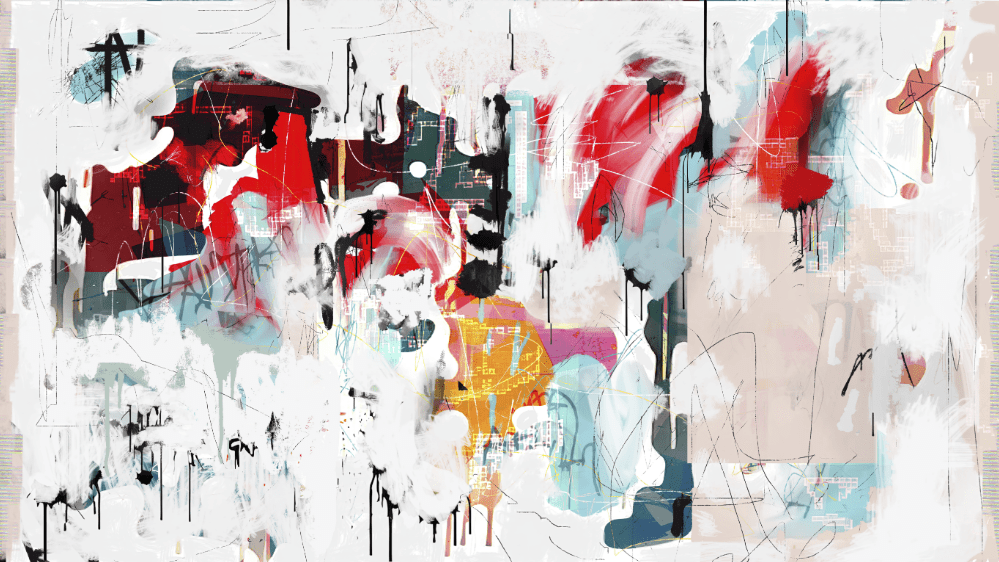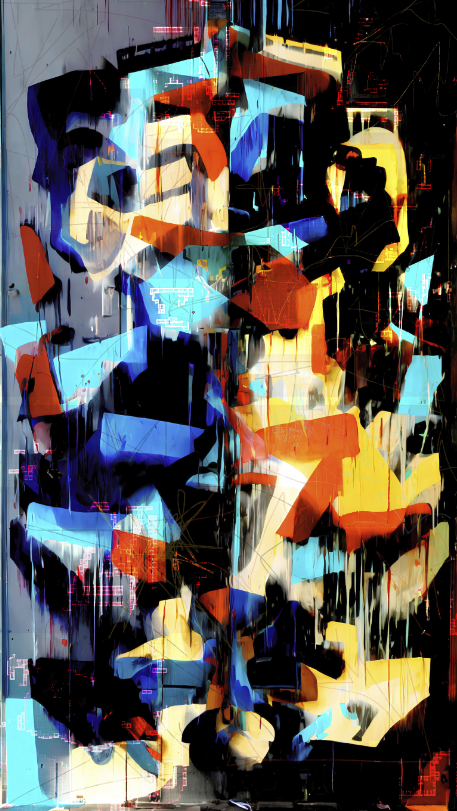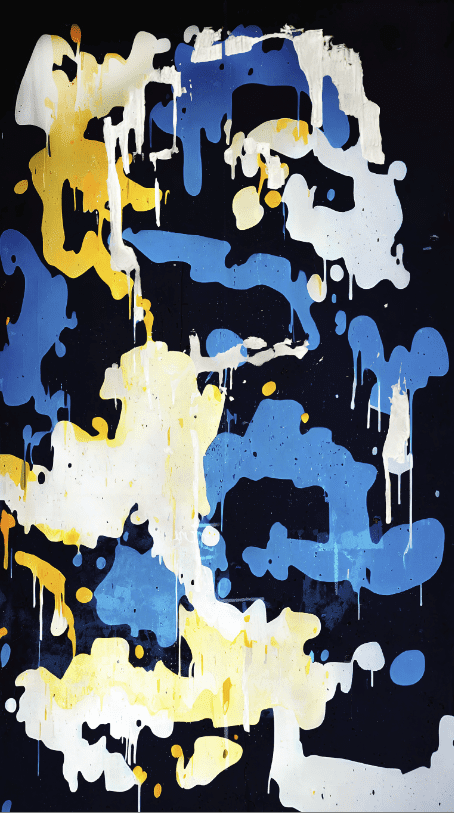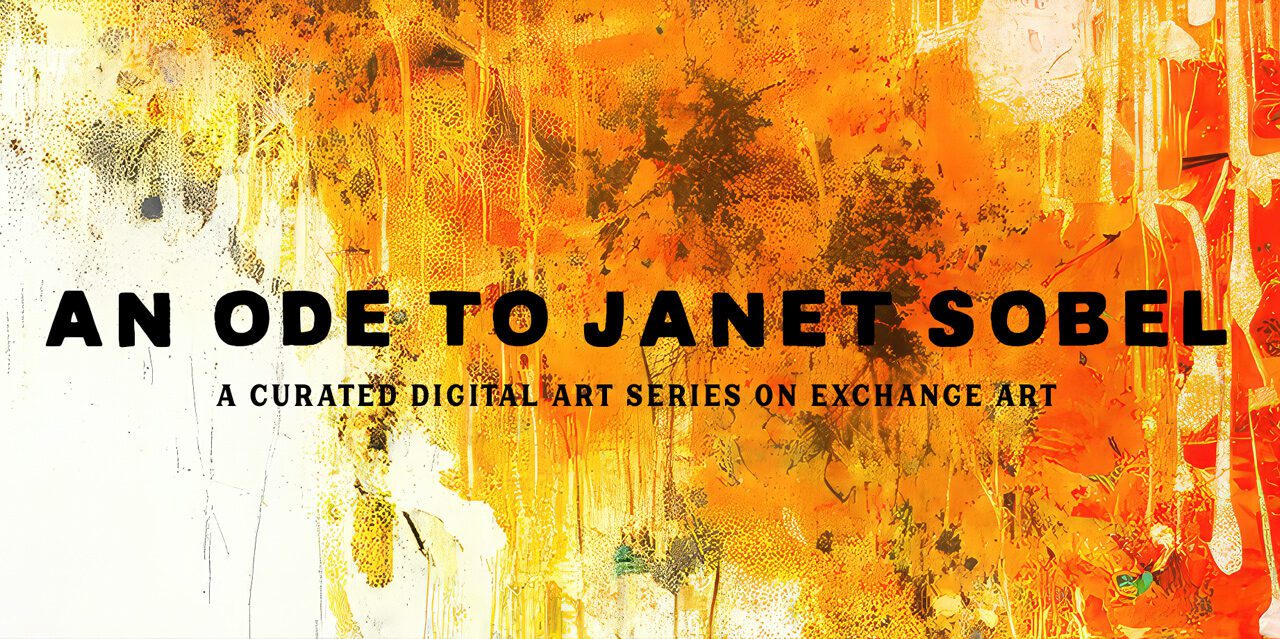In January of this year, Exchange Art selected 10 art series they felt reflected the “best” digital art in web3. It was an honor to have ‘Ode to Janet Sobel’ curated by Exchange Art.

It could be said Jackson Pollock is one of the most recognizable artists in modern history. He is certainly a major figure in the abstract expressionist movement in the 1940’s and 1950’s. He has inspired generations of artists, but even Pollock was influenced by other artists. In this case, Pollock’s drip technique was directly influenced by Janet Sobel, an unlikely (and under appreciated) icon forgotten by time.
If you look up Jackson Pollock on Wikipedia, there’s no mention of Janet Sobel. Her contribution to modern art is so significant there should be an entire paragraph on Pollock’s page about the drip technique she pioneered, that he later adopted as his own and made famous.
Ms. Sobel’s story could be made into a movie. The Ukrainian-born American artist didn’t start painting until she was in her mid-40s raising kids in a New York apartment. Self-taught artists like Sobel are enjoyable to watch because they don’t know the rules. No one told them what you can or can’t do.
As Sobel began painting more she pioneered not only the infamous drip technique, but she also is credited with the all-over painting style that was noticed by art critic, Clement Greenberg.
Fast forward to 2022, a new generation of artists in web3 are creating new exciting expressions of art in an entirely new art movement. It was important to put a spotlight on a historical figure who has received the recognition she deserves.
An Ode to Janet Sobel is a digital art series on the Solana blockchain that celebrates Janet Sobel’s place in history. Over the past 20 years, my art style has often included some form of drip technique. First, as a street artist and later on canvas and now digital canvases.
The series highlights different years of Sobel’s career. Each piece employs a different expression of drips. Starting in paint software Rebelle and a drawing tablet (I find Rebelle has the most realistic paint tools where the artist can “load up” their brush with digital acrylic, water color, etc..) and I begin painting digital marks on multiple layers.
Each layer is exported as an individual file (usually 10-20 layers) and then one or two layers are treated with AI to add texture. The layers are all imported into Photoshop where they are woven together, color corrected and then painted over again within Photoshop in new layers. Each piece ends up with anywhere from 20 to 40 layers when complete.
JS-1
JS-1 is the most complex piece of the series and has the most layers. It encapsulates everything the series stands for in one grand expression.

JS-2
JS-2 purposely has a 1950’s feel to it. With Tiffany’s blue and optimistic colors one might find on a Blue Note jazz album. This was a time post-WW2 when young families moved out of the city to suburbs in search of the American dream.

JS-3
Can a painting be a statue? Like JS-2 this piece draws inspiration from the jazz scene in underground clubs where under appreciated misfits of society assembled for moments of spontaneous magic. I was listening to Miles Davis & John Coltrane Live in Stockholm while creating this one.

JS-4
Pulling cues from the end of Janet Sobel’s life until her death in 1968; at this point she had faded from conversations at dinner parties where hipsters with bushy sideburns and tight fitting suits rubbed elbows while musing over Ralph Humphrey and Kenneth Noland works without stopping to consider how they got there. This one has flat monochromatic colors with large marks and smaller drippage intentionally less prominent.

JS-5
This one is just cool. These are my colors—wanted to make one that I personally would want on my wall. So happy with how it turned out. Also meant to have a “sculpture” feel.

JS-6
As if Quentin Tarantino assembled this collection the last piece is an homage to the beginning. Here, we have pure clean marks with a 1940’s feel to it. The drip technique is the most direct call out to Soble and Pollock, which is not easy to accomplish on a digital canvas. This is the only piece where I painted drips on an actual canvas, then imported them into the computer for a more authentic feel. The white drips upper left on top of the yellow field is one of the irl paint drips that I couldn’t quite achieve in Rebelle.

Accidental Intent
Accidental Intent shows another drip technique where acrylic paint was painted on a canvas, then imported into Photoshop and layered on top of the digital canvas.





